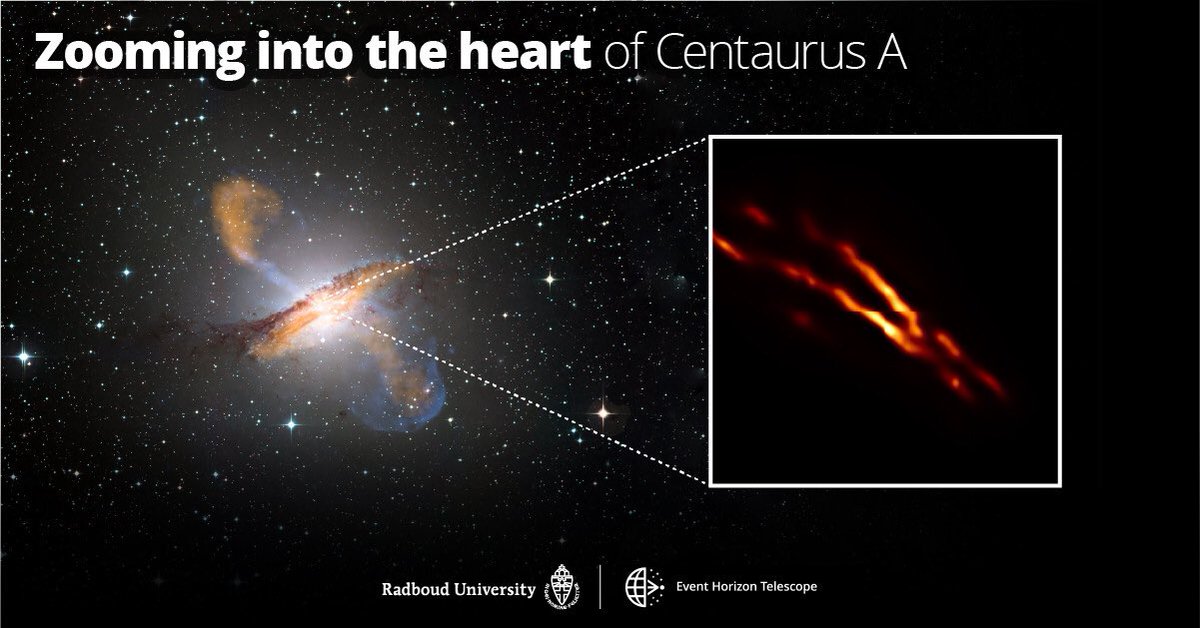
These giant “scissors in space” point to the location of a supermassive black hole of 55 Million solar masses in the heart of the giant radio galaxy Centaurus A! Brand new image with unprecedented resolution by the @ehtelescope and our group @Radboud_Uni
ru.nl/english/news-a…
ru.nl/english/news-a…

In Centaurus A we do not see a ring like in M87, because the black hole is smaller. We see the plasma jet shooting out from the center and that looks remarkably like the jet in M87. This points to universal similarities of black hole jets!
Centaurus A is huge & close. It is the brightest extragalactic radio source in the sky. The radio emission stretches 1.5 Million light years across. With radio eyes you would see a structure 200x larger than the full moon. All originates in a tiny spot in the heart of the galaxy. 

A supermassive black hole winds up gas and magnetic fields into a giant tornado or “jet”. It slings some matter back out into space before it can fall into the black hole. What we see are the edges of this tornado. The inner parts seem empty like in a big funnel.
The mass of this black hole is 10 larger than the one in the center of our Milky Way, but 100 times smaller than the one in M87 - with the famous 1st image of a black hole. So, it is super important to understand how black holes work that are in between these two extremes.
The wavelength where you can observe the black hole depends on BH mass and how much matter falls in. We developed simple scaling laws in the past that predicted where emission comes from near the BH. They seem to work - black holes are really simple!
ui.adsabs.harvard.edu/abs/2004A%26A.…
ui.adsabs.harvard.edu/abs/2004A%26A.…
In this paper 8 years ago ui.adsabs.harvard.edu/abs/2013A%26A.… with @mmosc_m we modeled the radio emission from the Galactic center black hole and suggested that jets radiate at the edges. We see that in M87 - now we see that in Centaurus A. A common principle maybe.
It is amazing that we can see so deep into the regions where black hole jets are formed and resolve them. What we see matches our basic picture - some details surprise us. I think we are on a good way to finally understand how black holes work - astrophysically speaking!
BTW, the image was the result of a great team effort again, led by Michael Janßen (not on Twitter). This paper was the highlight of his PhD thesis, produced in my group at @radboud_uni funded by @ERC_Research - it was a fantastic group indeed! #proud of you all
Finally, if you want to think and learn more about black holes, the EHT, the universe, and what it all means, have a look at my book “Light in the Darkness, Black Holes, the Universe, and Us” - it should be fun to read light-in-the-darkness.org 

• • •
Missing some Tweet in this thread? You can try to
force a refresh



